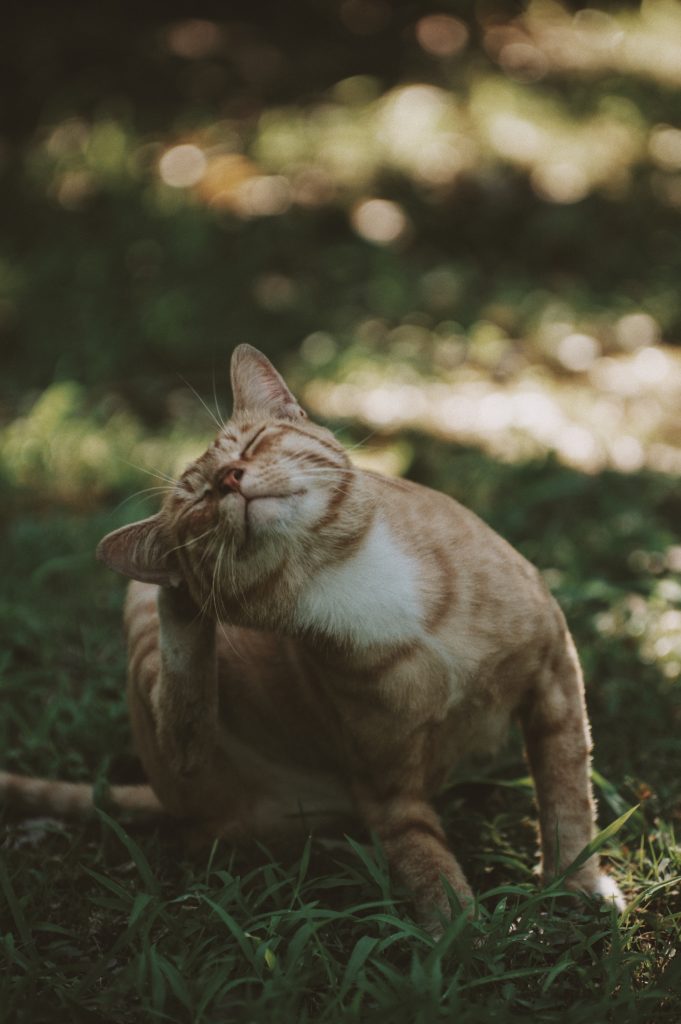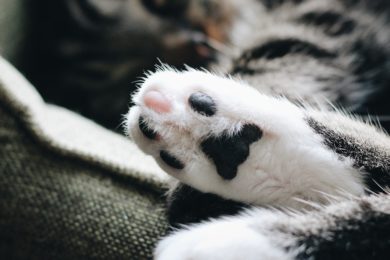 No matter how different cats and dogs are, there’s one thing they have in common. One very small, but very bothersome, thing. Ctenocephalides felis. The common cat flea affects both felines and canines – and it can even cause you discomfort. What do you need to know about fleas, and more importantly, what can you do if you’re facing an infestation?
No matter how different cats and dogs are, there’s one thing they have in common. One very small, but very bothersome, thing. Ctenocephalides felis. The common cat flea affects both felines and canines – and it can even cause you discomfort. What do you need to know about fleas, and more importantly, what can you do if you’re facing an infestation?
A Quick Look at Fleas
Fleas are an external parasite; they feed on the blood of their host. These little vampires are quite the athletes: they jump as high as two feet – and they can do this up to 10,000 times in a row when they’re on the hunt for a host. That’s right: the tiny 1-3 millimetre insect can leap and bound the length of three football fields when they’re looking for a new, rent-free home.
This ability makes it very easy for them to find your dog or cat. Your pet comes into contact with fleas through other animals or through the environment; they simply jump on board and get ready to feast.
One Flea, Two Fleas, an Infestation of Fleas
Fleas are incredibly prolific. During their lifespan, which ranges from just a few days to as much as a year, they can produce millions of young. Just one flea can start an infestation; as it camps out on your pet, it lays eggs in the fur. These eggs can drop into your couch, bedding, rugs, etc.; so now your cat/dog has fleas – and your home has them too! New fleas then find a host. (Watch out, it could be you!)
Fleas: A Pesky Pest – and a Health Hazard
There’s no doubt that fleas are a nuisance. When they bite, their saliva causes irritation – and itch! But fleas can also cause serious health issues, such as:
- Flea allergy dermatitis.
- Tapeworms.
- Hair loss.
- Anemia (especially in kittens and puppies).
- Skin infections from excessive scratching.
How do you know that your pet is hosting a flea party? Excessive itching is always a red flag: if you notice this behaviour in your cat or dog, search for fleas immediately. Use a fine tooth comb and run in through your pet’s fur, paying particular attention to the base of the neck and tail. You may find:
- Fleas, which are brown and about the size of a pinhead.
- Dried blood that fleas excrete. The “flea dirt” is small and black.
- Very small white grains. These are flea eggs.
Also be on the lookout for these other symptoms:
- Chewing and licking.
- Hair loss.
- Scabs or hotspots.
- Irritated skin.
- The presence of tapeworms (small, white and shaped like grains of rice, you may find these in your pet’s feces or hair around the backside).
- Pale gums.
Spot these signs of trouble? It’s time to take action.
No Fleas, Please: Removing Fleas from Your Pet and Home
First stop: your vet. Ask about an effective treatment that deals with fleas at all stages of the life cycle. There’s no sense in eradicating the adult fleas if the eggs, larvae, and pupae remain alive to start the infestation all over again.
There are several great options on the market, including Advantage, Advantix, Frontline, and Revolution. Your vet can help you select an appropriate option for your pet and show you how to correctly administer the medication. Make sure to treat every animal in your home.
Now that you’ve treated your pet, the fun’s only just begun! You still need to treat your house and yard so that you can stay proactive in the fight against fleas. What should you do?
In the house:
- Thoroughly clean, wash, and vacuum all linens, bedding, carpeting, and other surfaces. Pay close attention to the areas in which your pet spends a lot of time.
- Ask your vet about a permethrin-based product to treat your upholstery, floors, pet bedding, etc. In the past, fogging was the only option for severe flea infestations. Today, a product such as Siphotrol Plus II can be applied, and within 15 minutes your surfaces are safe for contact.
- Wash pet bedding every week.
In the yard:
As long as you treat your pet and keep on top of indoor cleaning, yardwork is optional. It can help you eliminate some of the source, though:
- Dispose of yard debris, such as grass clippings and leaves.
- Use a flea/tick removal spray. Make sure it’s environmentally-friendly (and pet-friendly!). Hit dark, moist areas where fleas like to hide.
Remember: prevention is the best medicine. Even if your cat pets do not have fleas, it’s a good idea to invest in a good treatment product. If they do, get busy treating, cleaning, and ridding your furry friends and house of these pests.


